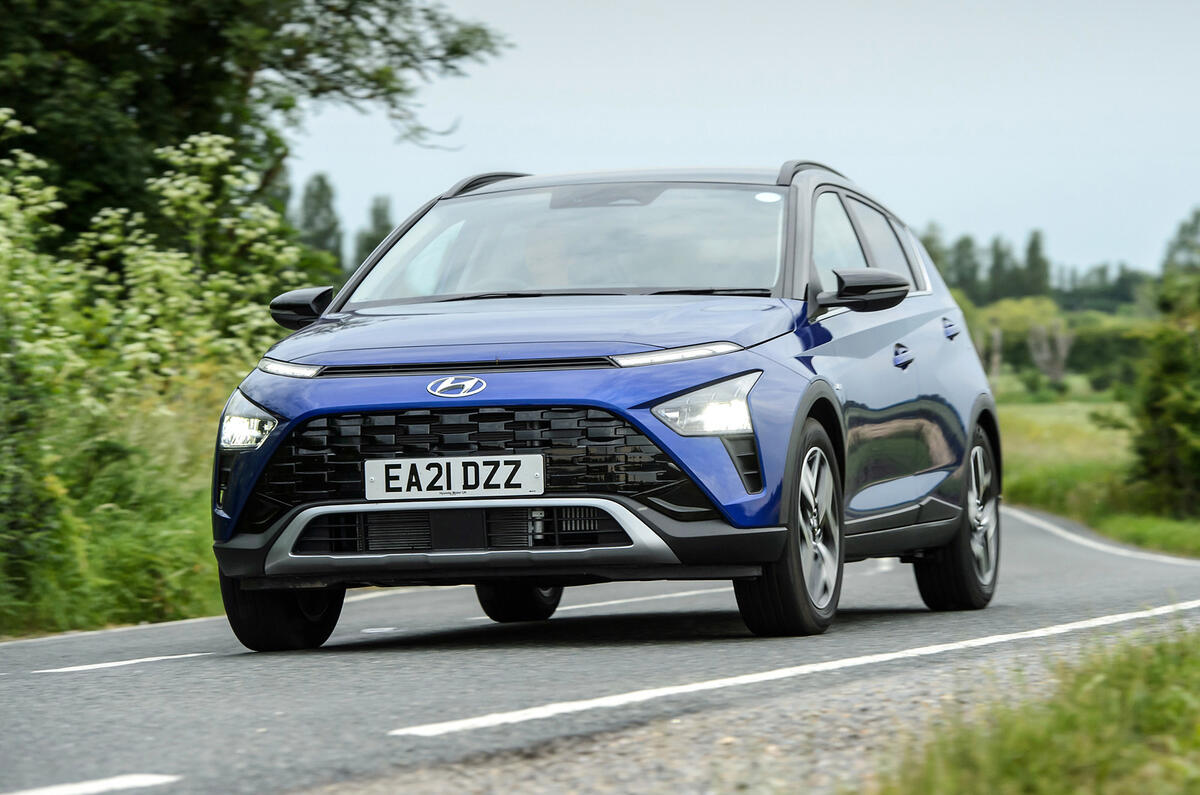The engine range is short. You can have a 1.0-litre T-GDI petrol engine with either 99bhp or 118bhp, each available with a six-speed manual or seven-speed dual-clutch automatic gearbox. The cheapest engine and trim level narrowly undercuts an equivalent Vauxhall Crossland, and although rivals from Skoda, Citroën and Renault all look better priced, the Bayon certainly offers competitive value when you level them up on equipment.
The interior of our test car was a little monotone-grey. Its mouldings were hard and a bit shiny and smudgy, although they didn’t lack for visual interest thanks to Hyundai’s current styling penchant for decorative trims with dust-attracting horizontal ridges. Its fittings aren’t pudgy or inviting to the touch, but they do feel hardy and robust. Elsewhere, some comfortable front seats, crisp and clear digital instruments, plenty of storage space, and a clearly labeled and usable infotainment system should all meet with your approval.
Comfort, refinement and easy drivability are the car’s dynamic priorities, and they’re delivered upon pretty well. Both the engine and suspension feel well isolated from the cabin, the engine only getting rowdy when revved hard but having plenty of torque for assured mid-range performance. For a typical real-world average fuel economy return in mixed daily driving, expect a nice round 50mpg.
The Bayon’s ride isn’t soft, but instead maintains reassuringly consistent body control with just a hint of firmness at town speeds. Grip level is only moderate but perfectly adequate, with a gently spinning inside front wheel ready to chirrup away at you when you’re hurrying along a bit hard.
The car’s engine and steering could be calibrated a little bit more carefully. The engine has slightly dull initial throttle response and one or two flat spots in its power delivery, and the steering is a little too keen to self-centre, which can make low-speed handling a bit unintuitive. But at least it isn’t as lightweight and over-assisted as so many manufacturers seem to think steering systems in this breed of car ought to be.






















































Join the debate
Add your comment
@gavsmit 5 years ago you could buy a Fiesta and a Corsa brand new from the manufacturer for under £10,000. Now both cars cost over £16,000! I wrote off my car last week and I was astonished at how much new cars cost now!